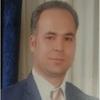Explore all the information on
Dairy cattle health
Welcome to the page about Dairy cattle health of Engormix; a source of knowledge on Dairy cattle health.
Dr. Claudia Parys shares insights on the mechanisms behind improved amino acid balance, microbial protein synthesis, and metabolic resilience, highlighting BoruCare® Capsin's role in advancing sustainable dairy production ...
Comments : 0
Recommendations: 0
Marcos Zenobi, Technical Services Manager at Balchem Latin America, outlines key shifts in amino acid requirements from prepartum to peak milk production in high-yielding dairy cows. He also shares field data showing the economic return of using protected amino acids. A focused look at nutritional efficiency with measurable impact. ...
Comments : 1
Recommendations: 0
A relatively long heat wave swept through Israel and the Middle East region in mid-August 2025. As expected, reports were received from various regions of the country of a significant decrease in milk yield per cow. A previous review published on the association's website characterized the decrease in milk production following the heat wave. The purpose of the current article is to examine the effect of the increase in cows' heat load during the heat wave period and after it ended,...
Comments : 0
Recommendations: 1
Pneumonia of calves is a respiratory disease caused by the entry of bacteria and respiratory viruses into the body of calves, which occurs at the age of two to five months, and is more common in closed places and in the winter season. The best prevention of this pneumonia disease in calves is to give colostrum to calves. ...
Comments : 3
Recommendations: 0
Exclusive events held in the United Kingdom and Italy in September 2025
– The Balchem Animal Nutrition & Health team is hosting two exclusive...
Comments : 0
Recommendations: 0
Dr. Tom Overton of Cornell University presented “Turbocharge Your Fresh Cow Diets” at the 2025 Florida Ruminant Nutrition Symposium Mini-Symposium. His session explored nutritional strategies to enhance performance, health, and metabolic efficiency in early lactation cows. ...
Comments : 0
Recommendations: 0
Dr. Clay Zimmerman of Balchem presented “AminoShure-XL: Redefining Amino Acid Nutrition” at the 2025 Florida Ruminant Nutrition Symposium Mini-Symposium. His talk focused on advancements in rumen-protected lysine and its role in optimizing dairy cow performance through precision amino acid nutrition. ...
Comments : 0
Recommendations: 0
Marcos Zenobi, Technical Services Manager at Balchem Latin America, highlights the role of protected amino acids during the transition period in dairy cows. He explains how nutrients like protected lysine support metabolic health and boost reproductive performance in early lactation. ...
Comments : 0
Recommendations: 0
The negative effects of heat stress and ways to deal with them are currently among the most important research areas. The reason for this is clear, heat stress has become the greatest cause of economic losses to dairy herds, including in regions with a relatively temperate climate, which have only begun to feel the problem in recent years. Evidence of the importance of the issue can be found in the following figure, taken from a recently published article and reviewing the sharp...
Comments : 2
Recommendations: 1
Zonneveld Dairies, Inc., a 10,000-cow dairy operation in California, provides valuable insights from their experience navigating HPAI
At the forefront of the dairy industry, Jacob Zonneveld, president and CEO of Zonneveld Dairies, Inc., boldly navigates challenges as he openly shares his experiences with Highly Pathogenic Avian Influenza (HPAI). With a sprawling operation of 10,000 cows and an equivalent number of replacement heifers spread...
Comments : 0
Recommendations: 0
INTRODUCTION Early detection of mastitis is considered to be the best method to allow the cows the best chance for prompt recovery. Most farms base mastitis detection on visualization of clinical signs such as swollen quarters or altered milk. However, on large farms that have hired workers for milking it may prove challenging to have good mastitis detection. Therefore, new technologies are being constantly tested to automatically detect mastitis in the milking...
Comments : 1
Recommendations: 0
Introduction In March 2024, the CDC and USDA reported the first-ever cases of HPAI A(H5N1) in dairy cattle in the United States. As of May 2025, over 1,000 herds across 17 states have been affected, with California among the hardest hit. This unprecedented outbreak has had a significant impact on milk production, animal health, and public confidence. The emergence of Highly Pathogenic Avian Influenza (H5N1) in California's dairy cattle since August 2024 has...
Comments : 0
Recommendations: 2
A cow’s biology and genetics set the stage for her milk production potential. Thanks to genomics, the pace of genetic progress has accelerated in recent years, pushing that potential ever higher. But are we feeding cows to match it? Today’s dairy cows can achieve more with better nutrition, yet their ability to physically consume enough nutrients lags behind their rising requirements. ...
Comments : 0
Recommendations: 1
In this conversation with Dr. Ryan Ordway from Balchem, we dive into how dairy farmers can manage the transition period without relying on Kextone. The key? Preventing ketosis through proper nutrition and management. ...
Comments : 0
Recommendations: 0
In this video, Dr. Ryan Ordway from Balchem explores how Niashure, a natural, non-medicated nutritional solution is designed to support animals through the critical transition period. ...
Comments : 0
Recommendations: 0
Dr. Ryan Ordway from Balchem talks about the benefits of ReaShure-XC, a powerful nutritional solution that ensures adequate choline intake for animals. By providing sufficient choline, this product promotes a healthy liver, supports mammary gland energy for milk production, and boosts colostrum quality....
Comments : 0
Recommendations: 0
Please tell homeopathic treatment ...
Comments : 0
Recommendations: 0
The American Feed Industry Association (AFIA) will be hosting an educational program tackling hot topics facing the animal food industry at the upcoming International Production & Processing Expo (IPPE) , happening Jan. 28-30, 2025, in Atlanta, Ga. The program, “What’s Keeping the Feed Industry Up at Night?” ...
Comments : 0
Recommendations: 0
Lecture given as part of bpt (German National Veterinarians Association) meeting 2024, held as part Euro Tier exhibition, Hannover, Germany. The principal factors affecting world dairy sectors in summer are climate change (global warming) and the Increase cow’s productivity. The high yielding cow generates more than 2000 W of heat (like 25 persons), which is much above her capability to dissipate, in a typical summer day. The cow in Germany will...
Comments : 0
Recommendations: 2
Dry period heat stress significantly reduces milk yield in the subsequent lactation in cows. Altered methylation patterns in mammary tissues is associated with the decline in milk yield. We hypothesized that as a methyl donor, choline (RPC) supplementation reverses similar patterns of methylation and thus productivity in heat-stressed dams. Late-gestation Holstein cows (n = 51) housed in freestall barns were enrolled to either heat stress (HT, n = 12), HT with RPC (HTC, n = 11), cooling (CL,...
Comments : 0
Recommendations: 0








.jpg&w=3840&q=75)







